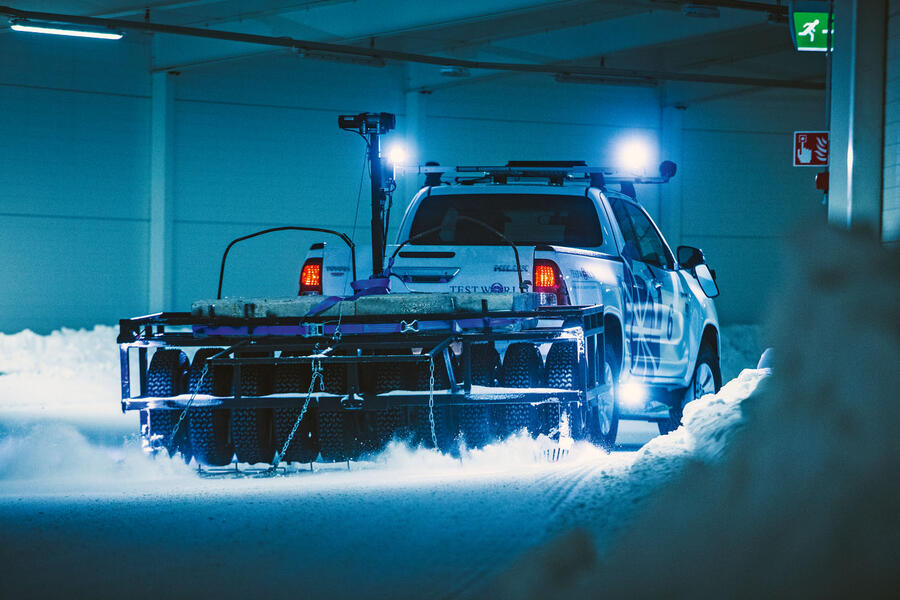Around the edges are banks of crusty, icier snow, which Mäki reassuringly tells me will prevent an out-of-control Tiguan punching a hole in the facility wall.
The track is quite narrow at nine metres, but there’s plenty of space to enter and exit on a wide line. Mäki demonstrates his lifelong mastery of snow driving, first gained in his teens, by braking early and firmly, counteracting front-end plough by working the rear axle in the opposite direction as we enter the corner. He’s effortlessly precise and makes the Tiguan dance around Indoor 2.
Speeds are kept low by the tight corners and the lack of run-off, but Mäki stresses that tyre testing and vehicle evaluation are about consistent and repeatable driving to build up banks of data comparable across, for example, different stability control settings and tyres. Lap times are recorded as the key metric, but seat-of-the pants, test driver evaluation plays an equal role in chassis and tyre set-up.
Needless to say my efforts are more clumsy, and I make the classic beginner’s error of braking too late and understeering wide.
I also find the lighting inside the test track quite distracting and, with no outside visual reference point, rapid circuits are slightly disorienting. Mäki agrees and says that even the pros do most testing with the lights off to eliminate the strobing effect.
But with some guidance from Mäki, I improve. I’m also reminded of snow driving last year on fresh powder in Canada, notable given how the snow in Test World is months old.
And that’s the unique feature at Test World – fresh outdoor snow on tracks with precisely controlled temperature, grip and humidity for winter testing in summer. Now that’s a novelty.

They’ve got the snow-how
In essence, Test World is a cold store – like those used to keep food fresh – built on top of an ice rink. But there is a lot more ‘snowhow’ in the detail of how indoor snow, curated to mimic outdoor conditions, is kept in tip-top condition for eight months of the year.
Not only is the air above ground cooled, but two sets of underground pipes with layers of insulation ensure precise control of test track temperature.
The deepest pipes actually warm the ground, using waste heat from the refrigeration process, to stop the permafrost under the test halls from dictating track conditions.
A central refrigeration plant – out of bounds to Autocar because its plumbing is top secret – has a power rating of 1.5MW, enough to cool four ice rinks. Ethylene glycol coolant flows through 50 miles of underground pipes, cooled by heat exchangers in the central plant. The heating circuit flows through 28 miles of pipework.